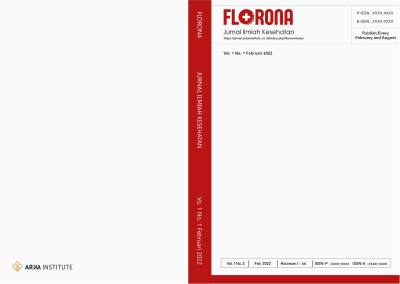Keragaman diet pasien tuberkulosis paru berdasarkan IFLS-5
Main Article Content
Abstract
Tujuan penelitian ini adalah untuk mengetahui keragaman makanan, serta makanan sumber makronutrien (protein, karbohidrat, dan lemak) pada pasien TB Paru berdasarkan data Indonesian Family Life Survey (IFLS-5). Penelitian ini menggunakan desain deskriptif potong lintang dengan data sekunder dari IFLS-5 tahun 2014-2015. Subjek penelitian adalah seluruh responden yang pernah terdiagnosisi TB, diperoleh melalui total sampling. Keragaman makanan dihitung menggunakan Individual Dietary Diversity Score (IDDS) sesuai panduan FAO, dengan 10 kelompok pangan. Analisis data dilakukan secara deskriptif dengan menggunakan SPSS. Sebanyak 273 responden dianalisis, dengan mayoritas berjenis kelamin laki-laki (54,6%) dan median usia 38 tahun. Konsumsi makanan didominasi oleh karbohidrat, terutama nasi (88% dikonsumsi setiap hari). Konsumsi sumber protein terbanyak berasal dari ikan (23%), sedangkan konsumsi daging relatif rendah (6%). Sayuran hijau dikonsumsi harian oleh 32% responden. Sebagian besar responden (93%) memiliki skor DDS <6, dengan median skor 2. Berdasarkan hasil penelitian, maka dapat disimpulkan bahwa keragaman makanan pada pasien TB Paru masih rendah dan didominasi oleh karbohidrat. Diperlukan edukasi gizi dan intervensi berbasis pangan untuk meningkatkan kualitas diet pasien TB guna mendukung keberhasilan terapi.
Article Details
Section

This work is licensed under a Creative Commons Attribution-NonCommercial 4.0 International License.
How to Cite
References
Aslam, M., Safdar, M., Khalid, S., Sharmeen, Z., Ifan, T., & Seher, K. (2021). The Effect of Nutrition Education on Nutritional Status of Tuberculosis Patients. Biomedical Journal of Scientific & Technical Research, 33, 25781–25785. https://doi.org/10.26717/BJSTR.2021.33.005391
Bandoh, D. A., & Kenu, E. (2017). Dietary diversity and nutritional adequacy of under-fives in a fishing community in the central region of Ghana. BMC Nutrition, 3(1). https://doi.org/10.1186/s40795-016-0120-4
FAO. (2010). Guidelines for Measuring Household and Individual Dietary Diversity. In G. T. B. and M. D. Kennedy (Ed.), Fao. Food and Agriculture Organization of the United Nations. https://doi.org/613.2KEN
Feleke, B. E., Feleke, T. E., & Biadglegne, F. (2019). Nutritional status of tuberculosis patients, a comparative cross-sectional study. BMC Pulmonary Medicine, 19(1). https://doi.org/10.1186/s12890-019-0953-0
Kusumo, I. P. P. G. R. Y. P. D. (2022). Intake of macromolecular nutrition status in pulmonary tuberculosis subjects at the Seputih Raman Health Center, Central Lampung. Health Science Journal of Indonesia, Vol 13 No 1 (2022): (In Press).
Maila, G., Audain, K., & Marinda, P. A. (2021). Association between dietary diversity, health and nutritional status of older persons in rural Zambia. South African Journal of Clinical Nutrition, 34(1). https://doi.org/10.1080/16070658.2019.1641271
Ma’Rufi, I., Ali, K., Jati, S. K., Sukmawati, A., Ardiansyah, K., & Ningtyias, F. W. (2020). Improvement of Nutritional Status among Tuberculosis Patients by Channa striata Supplementation: A True Experimental Study in Indonesia. BioMed Research International, 2020. https://doi.org/10.1155/2020/7491702
Mendes, Y. C., Dourado, A. L. L., de Oliveira, P. V., Rezende, A. de O., Sales, A. C. de S., de Sousa, G. P., Pereira, E. de A., Sousa, E. L. C., Lindoso, M. C. C. M., Júnior, R. de M. R., Fernandes, L. R., Santana, L. C., Goiano, M. F., da Silva, L. C. N., Martins, R. F. M., de Sousa, E. M., & Zagmignan, A. (2025). Nutritional Factors and Food and Nutrition Insecurity in Patients with Tuberculosis. Nutrients , 17(5), 1–14. https://doi.org/10.3390/nu17050878
Rathnayake, K. M., Madushani, P., & Silva, K. (2012). Use of dietary diversity score as a proxy indicator of nutrient adequacy of rural elderly people in Sri Lanka. BMC Research Notes, 5. https://doi.org/10.1186/1756-0500-5-469
Ren, Z., Zhao, F., Chen, H., Hu, D., Yu, W., Xu, X., Lin, D., Luo, F., Fan, Y., Wang, H., Cheng, J., & Zhao, L. (2019). Nutritional intakes and associated factors among tuberculosis patients: A cross-sectional study in China. BMC Infectious Diseases, 19(1). https://doi.org/10.1186/s12879-019-4481-6
Ruel, M. T. (2003). Operationalizing Dietary Diversity: A Review of Measurement Issues and Research Priorities. Journal of Nutrition, 133(11 SUPPL. 2). https://doi.org/10.1093/jn/133.11.3911s
Sinha, P., Davis, J., Saag, L., Wanke, C., Salgame, P., Mesick, J., Horsburgh, C. R., & Hochberg, N. S. (2019). Undernutrition and Tuberculosis: Public Health Implications. In Journal of Infectious Diseases (Vol. 219, Issue 9). https://doi.org/10.1093/infdis/jiy675
Sinha, P., Lönnroth, K., Bhargava, A., Heysell, S. K., Sarkar, S., Salgame, P., Rudgard, W., Boccia, D., Van Aartsen, D., & Hochberg, N. S. (2021). Food for thought: addressing undernutrition to end tuberculosis. In The Lancet Infectious Diseases. https://doi.org/10.1016/S1473-3099(20)30792-1
WHO. (2019). INDONESIA - A community-led advocacy campaign to mobilize local funding for Tuberculosis. WHO, 5.
WHO. (2020). WHO | Global tuberculosis report 2019. In World Health Organization. https://doi.org/.1037//0033-2909.I26.1.78
Zheng, Y., Chen, H., Zhang, C., Hu, D., Zhao, F., Piao, W., Li, S., Liang, D., Luo, Z., Fan, Y., Gao, J., Cheng, J., & Yu, D. (2024). A community-based cross-sectional study of dietary composition and associated factors among tuberculosis patients in China. Scientific Reports, 14(1), 1–11. https://doi.org/10.1038/s41598-024-53146-5

